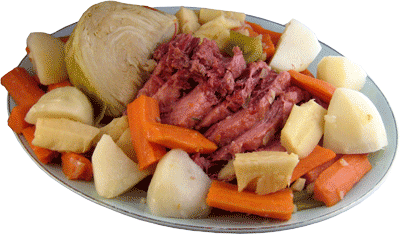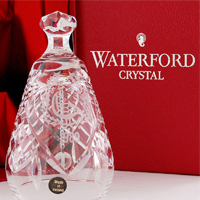History of Corned Beef And Cabbage
 Originally, corned beef and cabbage was a traditional dish served at Easter
Sunday dinner for the aristocracy in Ireland. The more expensive beef, because
there was no refrigeration at that time, was salted or brined during the winter
to preserve it; then It was eaten after the long, meatless Lenten fast.
Originally, corned beef and cabbage was a traditional dish served at Easter
Sunday dinner for the aristocracy in Ireland. The more expensive beef, because
there was no refrigeration at that time, was salted or brined during the winter
to preserve it; then It was eaten after the long, meatless Lenten fast.However, the majority of Irish people feel that corned beef and cabbage is about as Irish as pizza. In rural Ireland, the country folk made bacon and cabbage for Easter Sunday dinner which consisted of cured boiling bacon (or pork loin) cooked together with cabbage and potatoes.
Since the invention of refrigeration, the trend in Ireland is to eat fresh meats. The Irish say that mostly Irish-Americans eat corned beef and cabbage on St. Patrick's Day, Ireland's principal feast day, as a nostalgic reminder of their Irish heritage.
Corning is a form of curing; it has nothing to do with corn. The name comes from Anglo-Saxon times, before refrigeration. In those days, the meat was dry-cured in coarse pellets of salt, some the size of kernels of corn, which were rubbed into the beef to keep it from spoiling and to preserve it.
Today, brining, which is the use of salt water, has replaced the dry salt cure but the name corned beef is still used. Commonly used spices that give corned beef its distinctive flavor are peppercorns and bay leaves but these spices may vary regionally.
Although I have traveled to Ireland six times, I have never seen corned beef and cabbage on any menu. However, there is usually bacon and cabbage, available nearly every day in some restaurants. It is usually served with carrots and mashed potatoes with parsley sauce.
Disclaimer: LittleShamrocks.com is an affiliate website that receives commissions from sales of the products listed. We have purchased and sampled many, but not all, of the products on these pages.
© Copyright LittleShamrocks.com. All Rights Reserved.




